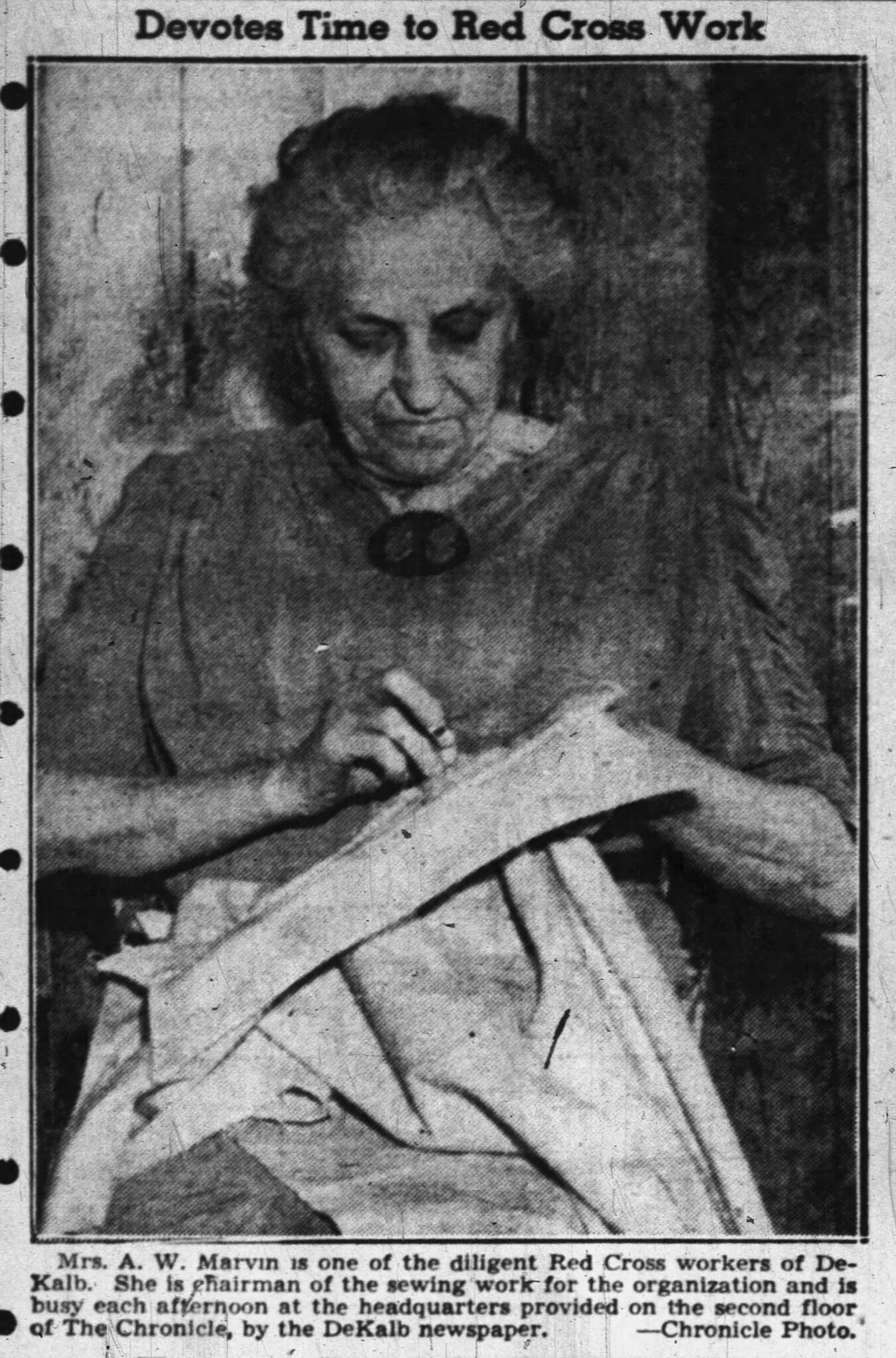An Honor Roll of DeKalb County women who served during WWII
“Women who stepped up were measured as citizens of the nation, not as women… This was a people’s war and everyone was in it.”
– Oveta Culp Hobby
(as quoted on the World War II memorial in Washington, D.C.)

World War II was the first time in American history that women were allowed to enlist in the military. Even today, these groundbreaking women remain on the sidelines of WWII history and many of their stories have been forgotten. Few of these women faced enemy fire or had the opportunity to serve overseas, but they were heroic nevertheless. When it was not expected of them, they left their homes and their families to serve their country. They served as essential behind-the-scenes members of the military, serving as officers, recruiters, clerks, storekeepers, control tower operators, nurses, pharmacists, and more. Women could enlist in special reserve units of the military starting in 1942, including the Women’s Army Auxiliary Corps (WAAC/WAC), United States Naval Reserve WAVES, Marine Corps Women’s Reserve, Coast Guard SPARS, and Air Force WASPS. (My grandmother, in the photo on the right, was one of the local women who enlisted in the WAVES.) The Army Nurse Corps (ANC) was established in 1901 and the Navy Nurse Corps in 1908, but these women were not considered part of the Army or Navy until later, when they were given retroactive veteran status. The approximately 350,000 women nationwide who enlisted in these reserves “released a man to fight” overseas. Whether they enlisted out of patriotic duty, sense of adventure, or another reason, they became an essential part of the military.

The women of DeKalb County, IL did not neglect their duty to their country. Many worked outside of the home for the first time in jobs that supported the war effort, such as building top-secret planes at Wurlitzer in DeKalb or working on local farms. Others became nurses or organized fundraisers and blood drives for the American Red Cross. About 150 women from DeKalb County decided to support the war effort by enlisting in the military. Many of them had male family members fighting overseas, and some of them even met their husbands while serving. Several women followed their sisters, cousins, and even daughters into the military. Hundreds of other served from home in the American Red Cross, the Cadet Nurse Corps, the Women’s Ambulance Safety Patrol, or volunteered as a Nurses’ Aide.
After the war was over, most of these quiet heroes returned home to DeKalb County and resumed their lives. They married, returned to their pre-war jobs, and raised children and grandchildren. Many of them were proud of their service, but felt that their sacrifice was small compared to the many men that sacrificed it all for their country. As my grandmother said once, it was “just a small thing to do for your country.” This Veteran’s Day, it’s time that these women get the credit and honor that they deserve for their service. Their efforts changed the US military and society forever. Remember their names, and learn their stories. We honor all of them, and to all who have served in any capacity, for their service for this country.
Continue reading:
Part I: Hidden Heroes: DeKalb County female WWII veterans
Part II: Homefront Heroes: The American Red Cross in DeKalb County
Part III: Homefront Heroes: The Cadet Nurse Corps
Part IV: Homefront Heroes: DeKalb County Women’s Ambulance Safety Patrol
Part V: Homefront Heroes: Volunteer Nurse’s Aide Corps, other organizations, and conclusion
This research has also been published in the Cornsilk, the quarterly magazine of the DeKalb County Historical & Genealogical Society. The first part was published in Winter 2019, and the second part in Spring 2020. Click here to read Part I, and click here to read Part II.